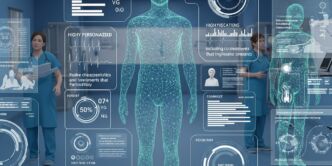Covid and computers: is it time to embrace trial simulations?
Covid and Computers: is it time to embrace trial simulations?
We are doing things differently now. For many of us, life has shifted online – shopping, doctor’s visits, work meetings. Clinical trials are no exception. With real patients locked at home, sponsors have scrambled to shift at least partly to “virtual” trials, using technology to remotely recruit and collect data from patients at home. There is renewed impetus to collect and analyse health data to create “synthetic” control or placebo arms, as patient recruitment became harder.
These innovations take certain parts of a clinical trial virtual, reducing the need for patients to visit physical sites. Both pre-date Covid-19, but pandemic constraints underscored their strengths.
So why not take the whole trial virtual? Fully-simulated in silico trials, or Model Informed Drug Development (MIDD), arguably offer even greater opportunities to reduce the size, cost and patient burden of clinical trials. They use computer models of disease and drug mechanisms to predict efficacy and safety in virtual patients. By combining the best and fullest knowledge of biological systems and molecular interactions with real patient data, they can be fine-tuned to test and explore the impact of a new therapy – without recruiting anyone at all.
Little wonder that in silico trials, too, rose in popularity in 2020. “It became much harder for pharma to run conventional studies, so some turned to simulated trials in order to test assumptions and make progress,” says Francois-Henri Boissel, co-founder and CEO of NovaDiscovery (NOVA).
Running simulations is not just a fall-back option when real-world trials can’t happen. They are increasingly used before, or alongside, regular studies in order to refine assumptions around appropriate dosing, therapy duration, treatment combinations and optimal patient sub-groups. Getting these things right up front can knock months – and many thousands of dollars – off development costs. They can reduce a 10,000 patient trial into a 2000 patient study, and help validate surrogate endpoints.
Regulators understand in silico trials’ potential to expedite drug R&D. FDA in 2018 created a MIDD pilot program to learn more about modelling and create a dedicated regulatory pathway to evaluate these approaches. The initiative is part of a series of performance goals agreed in the Prescription Drug User Fee Act VI legislation. “MIDD is a powerful approach to increase efficiency in drug development,” wrote FDA Office of Clinical Pharmacology staff. That was in 2019.
Still today, there are few visible examples of simulated trials’ impact on R&D timelines. No drug has been – and likely ever will be – approved on the basis of computer models alone. But behind the scenes, some sponsors are already starting to enjoy the fruits of better-designed (and thus cheaper) real-world studies. Regulators are agreeing to smaller study sizes based on simulated data. Label/dose expansions based on simulated data are already a reality.
As regulators organise themselves and hire appropriate experts, pharma companies too are ramping up in-house modelling efforts and / or turning to external providers.
There’s a way to go before virtual trials go mainstream. It’s early days even for the partly virtual efforts. But the global lockdown has added momentum to industry and regulator efforts to embrace simulated trials. It would be a shame to waste it.

